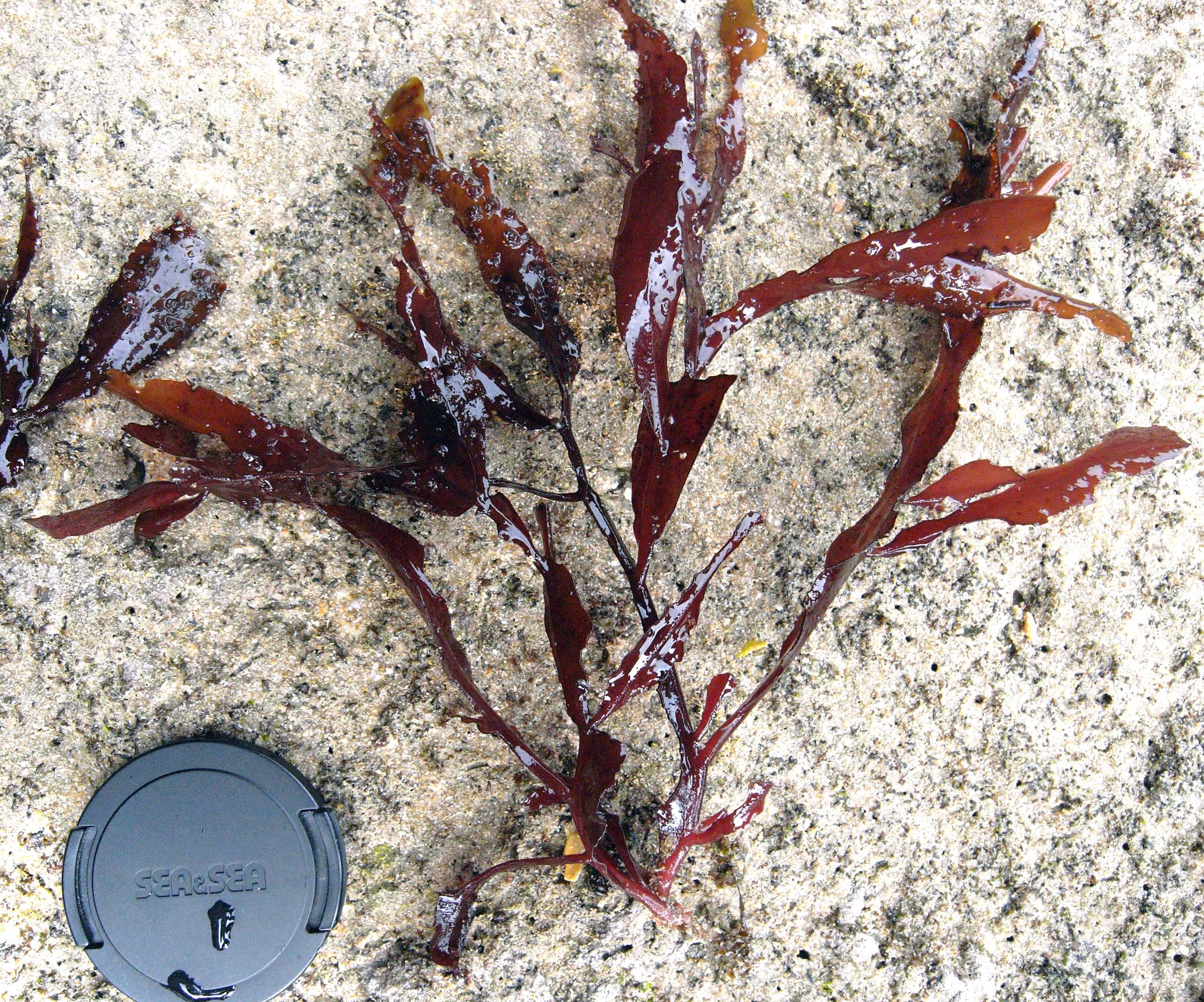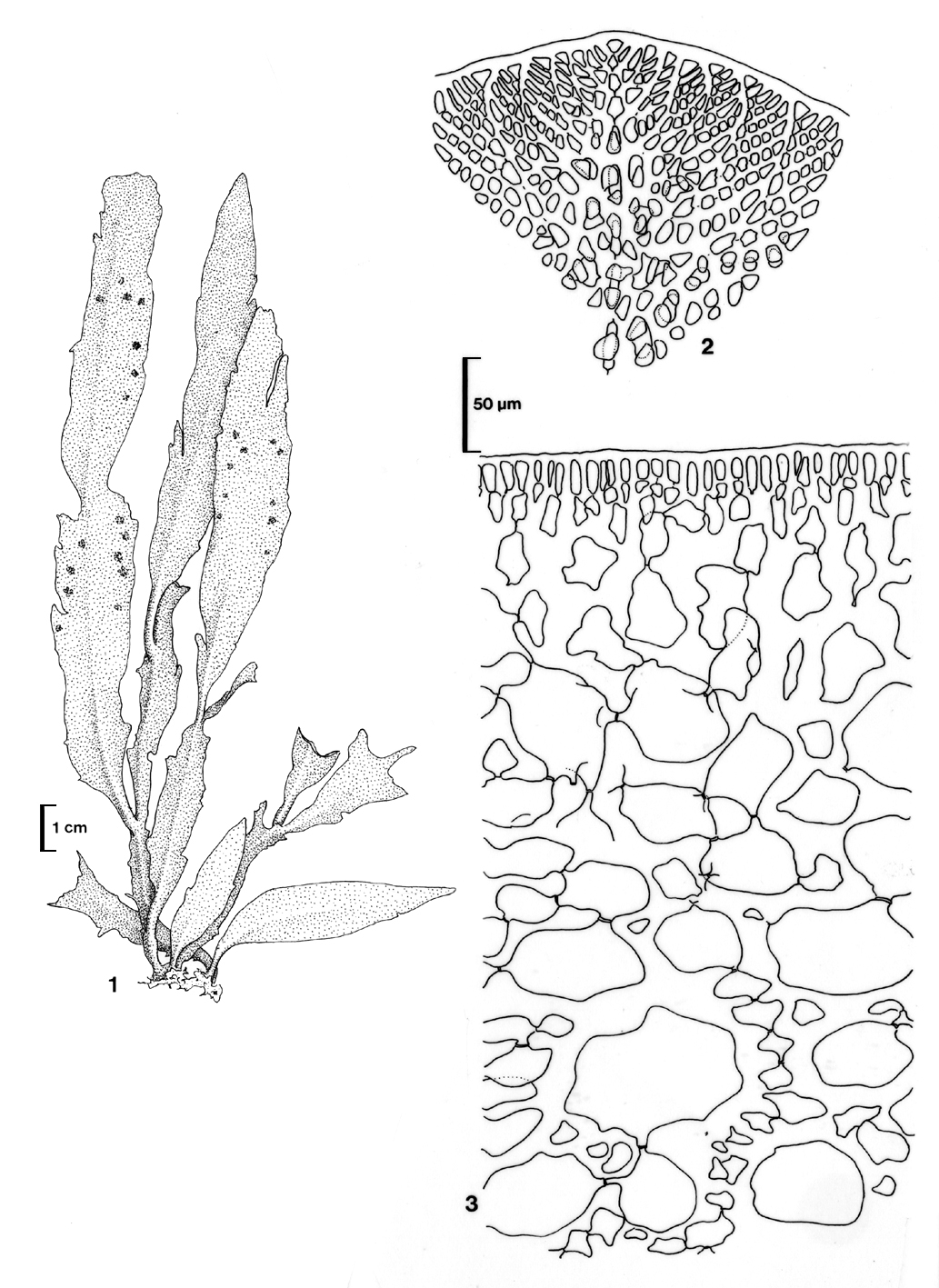Seaweeds of the South African South Coast


Order Ceramiales
Family Delesseriaceae
Holmesia capensis J Agardh 1890: 39, pl. I: fig 4.
Plants dark red, fairly robust, comprising a few strap-shaped to lanceolate blades up to 30 cm long arising from a common, rather rhizomatous holdfast; some plants with flattened stipe-like, and occasionally branched basal axes, these apparently formed from persistent midribs where alae have eroded. Blades about 1 cm wide (rarely to 2-3 cm), with midrib but no lateral veins, branched irregularly from the midrib. Growth from apical cell, with development of primary, secondary and tertiary cell rows, cortication starting near apex. Thallus polystromatic; medulla of mixed larger and smaller cells, with indistinct central filament, cortex of small cells. Reproductive structures in small foliaceous rosettes, scattered over blades on either side of midrib.
Collections, ecology and regional distribution
Recorded from Brandfontein, just west of Cape Agulhas (Stegenga et al. 1997) to Kei Mouth area (22-43). Subtidal and epilithic.
World distribution: South African endemic.
Type locality: “Cape of Good Hope” South Africa (Silva et al. 1996).

Holmesia capensis, Port Alfred (lens cap = 50 mm diameter).

Holmesia capensis. 1. Habit. 2. Apex (of male proliferation). 3. Cross section. Reproduced from Stegenga et al. (1997).
References Holmesia
Agardh, J. 1890, Till algernes systematic. Nya bidrag. Lunds Universitets Årsskrift, Afd. 2, 26(3): 1-125, 3 PL.
Silva, P.C., Basson, P.W. & Moe, R.L. 1996. Catalogue of the benthic marine algae of the Indian Ocean. University of California Publications in Botany 79: 1-1259.
Stegenga, H., Bolton, J.J. & R. J. Anderson. 1997. Seaweeds of the South African west coast. Contributions from the Bolus Herbarium 18: 655 pp.
Cite this record as:
Anderson RJ, Stegenga H, Bolton JJ. 2016. Seaweeds of the South African South Coast.
World Wide Web electronic publication, University of Cape Town, http://southafrseaweeds.uct.ac.za; Accessed on 07 January 2026.